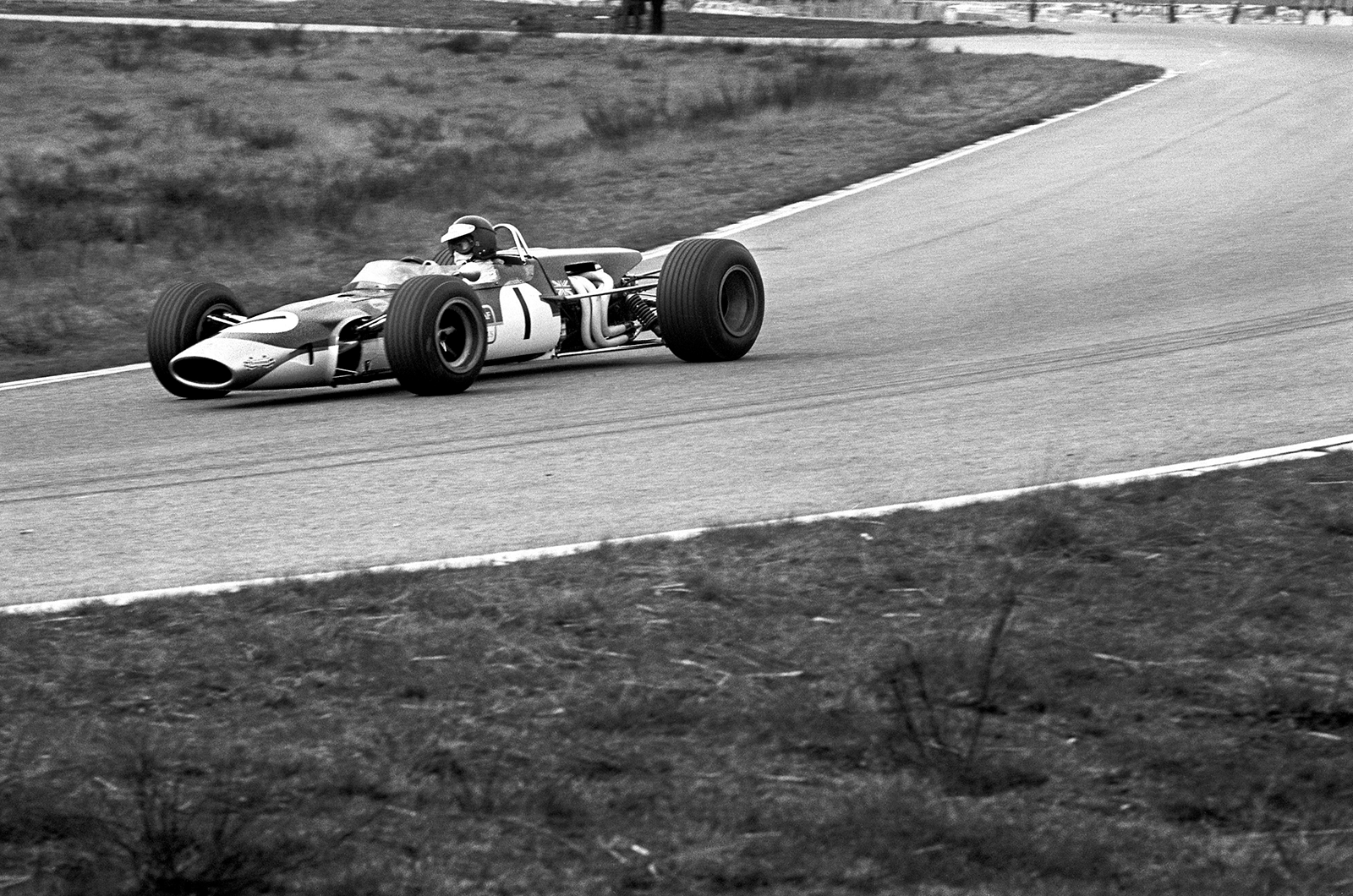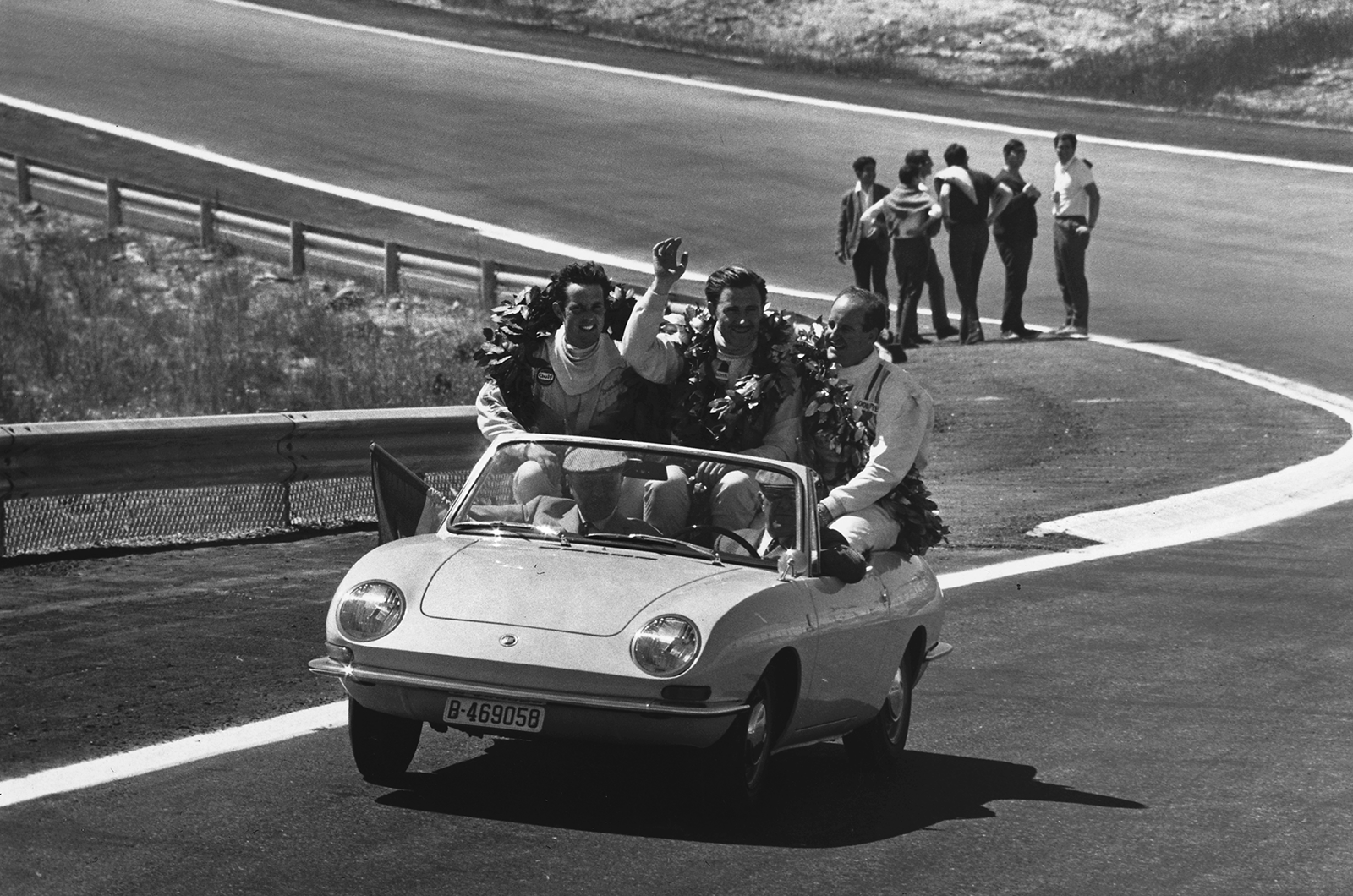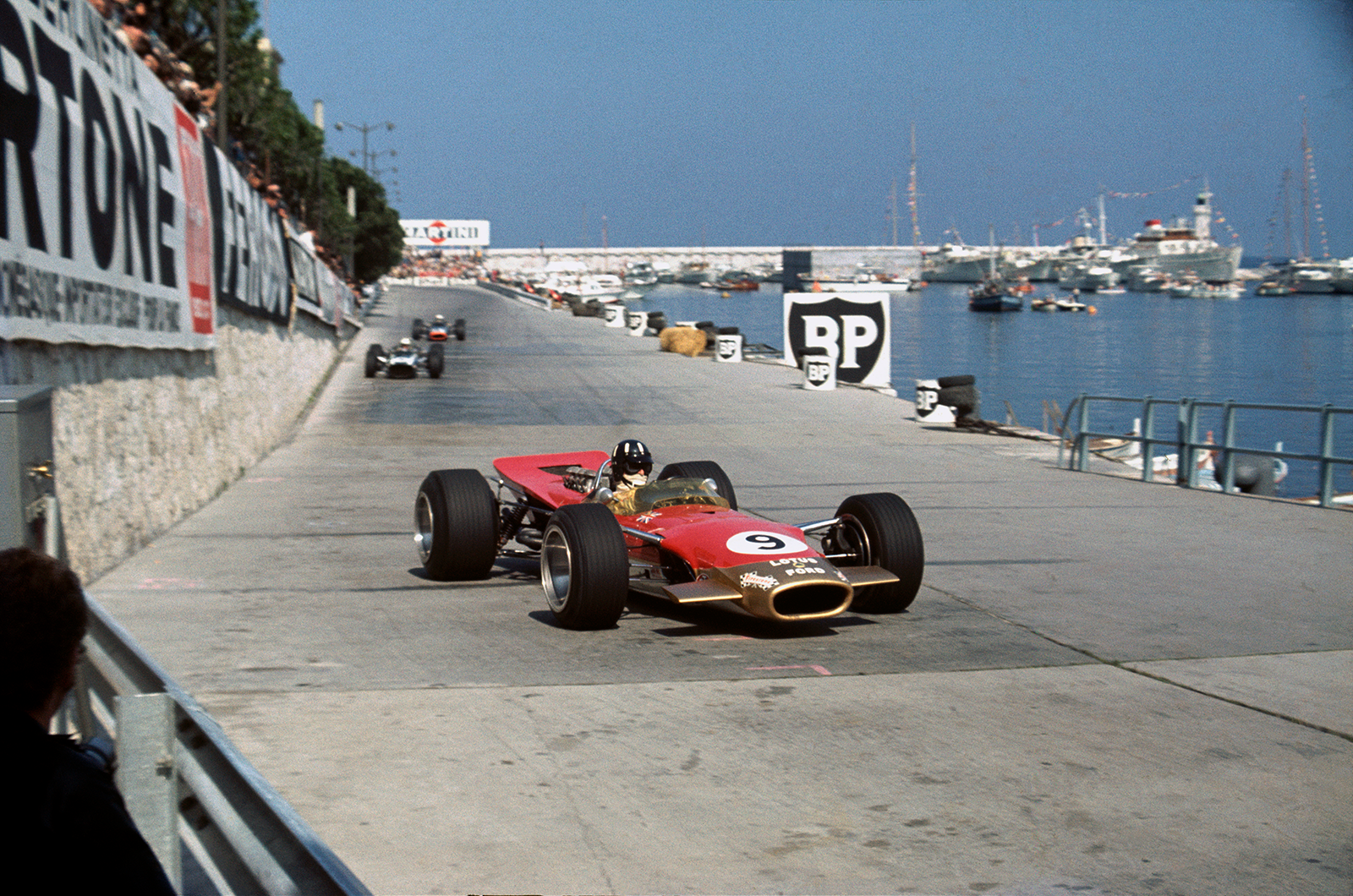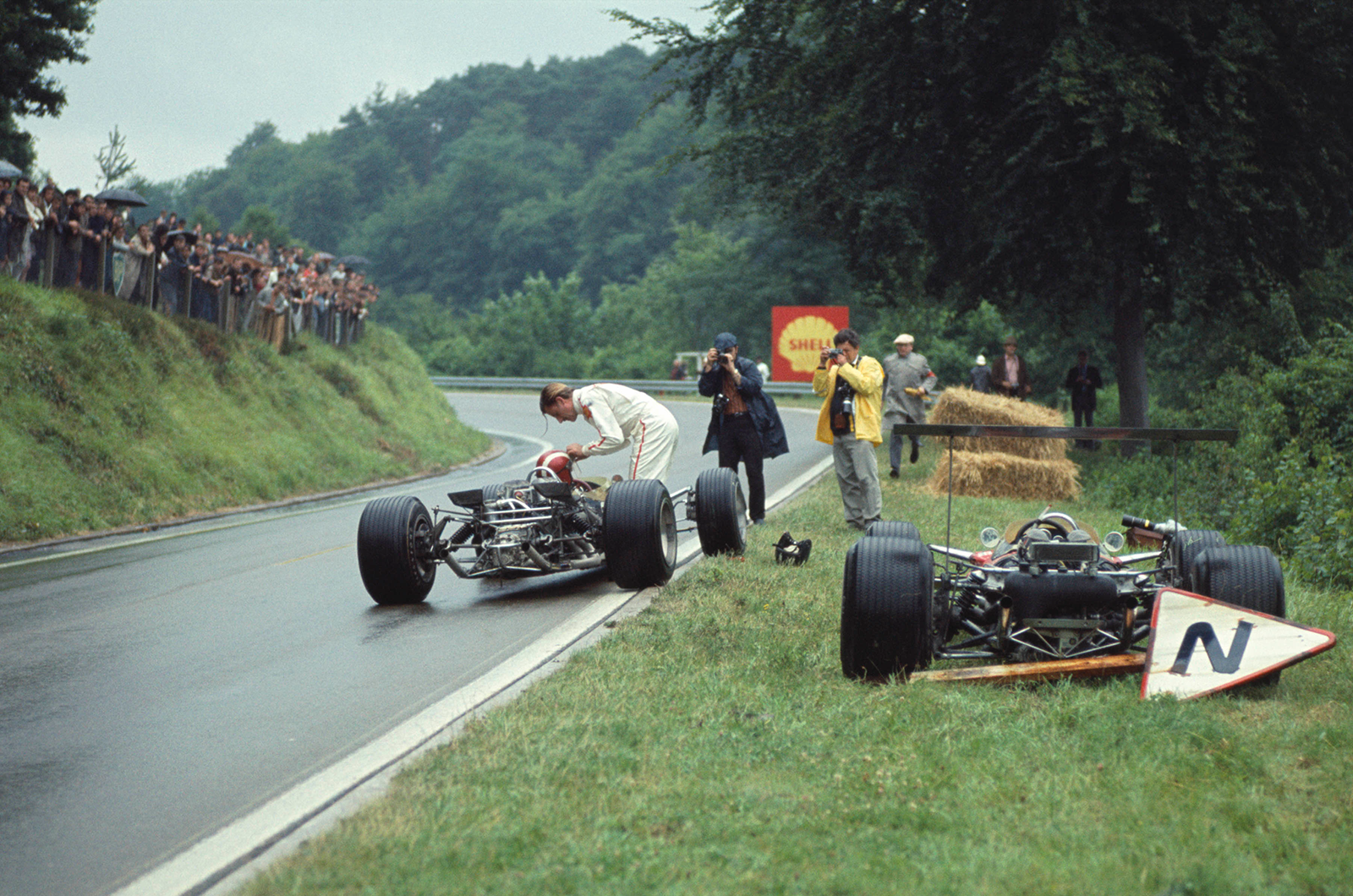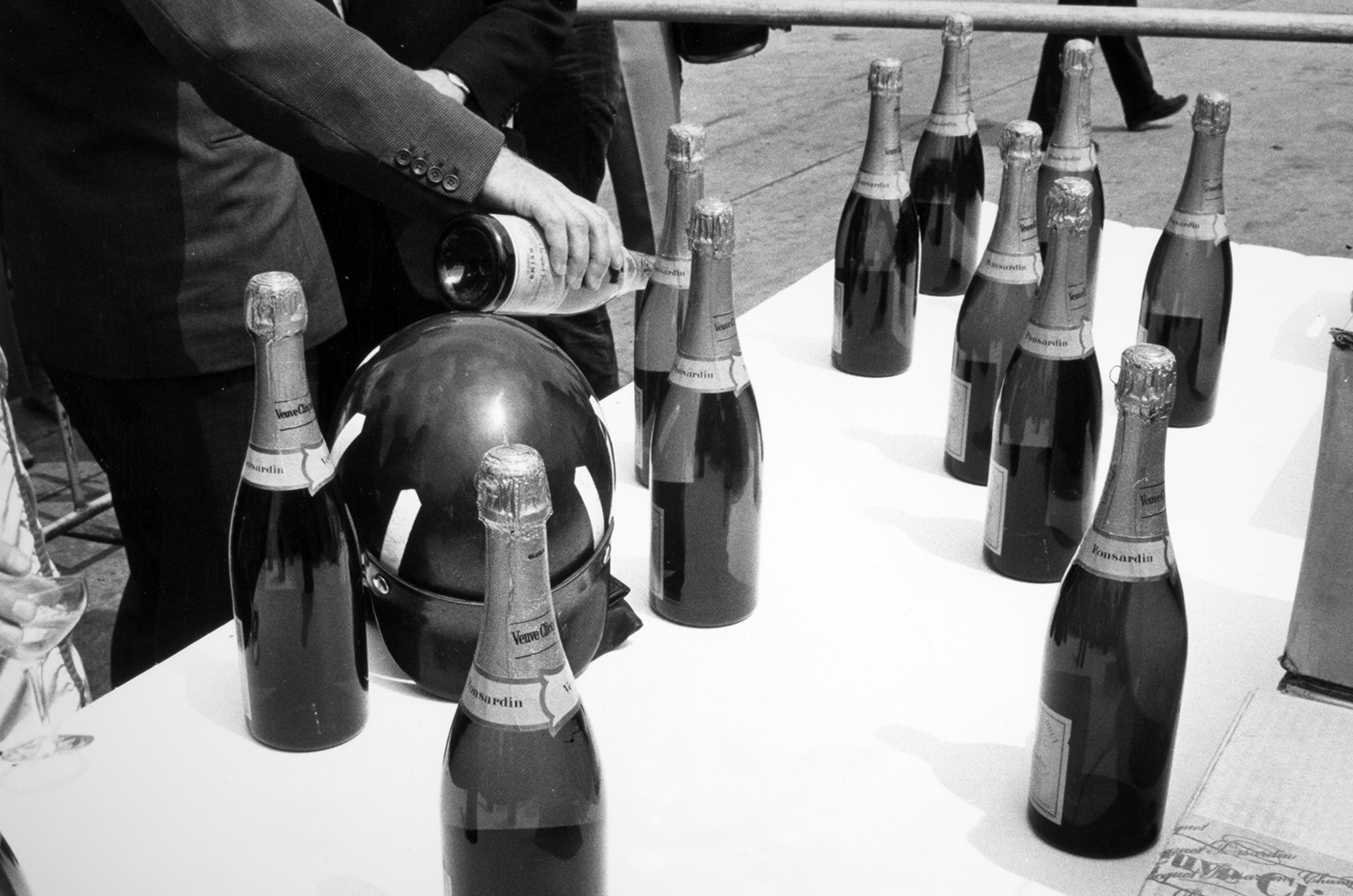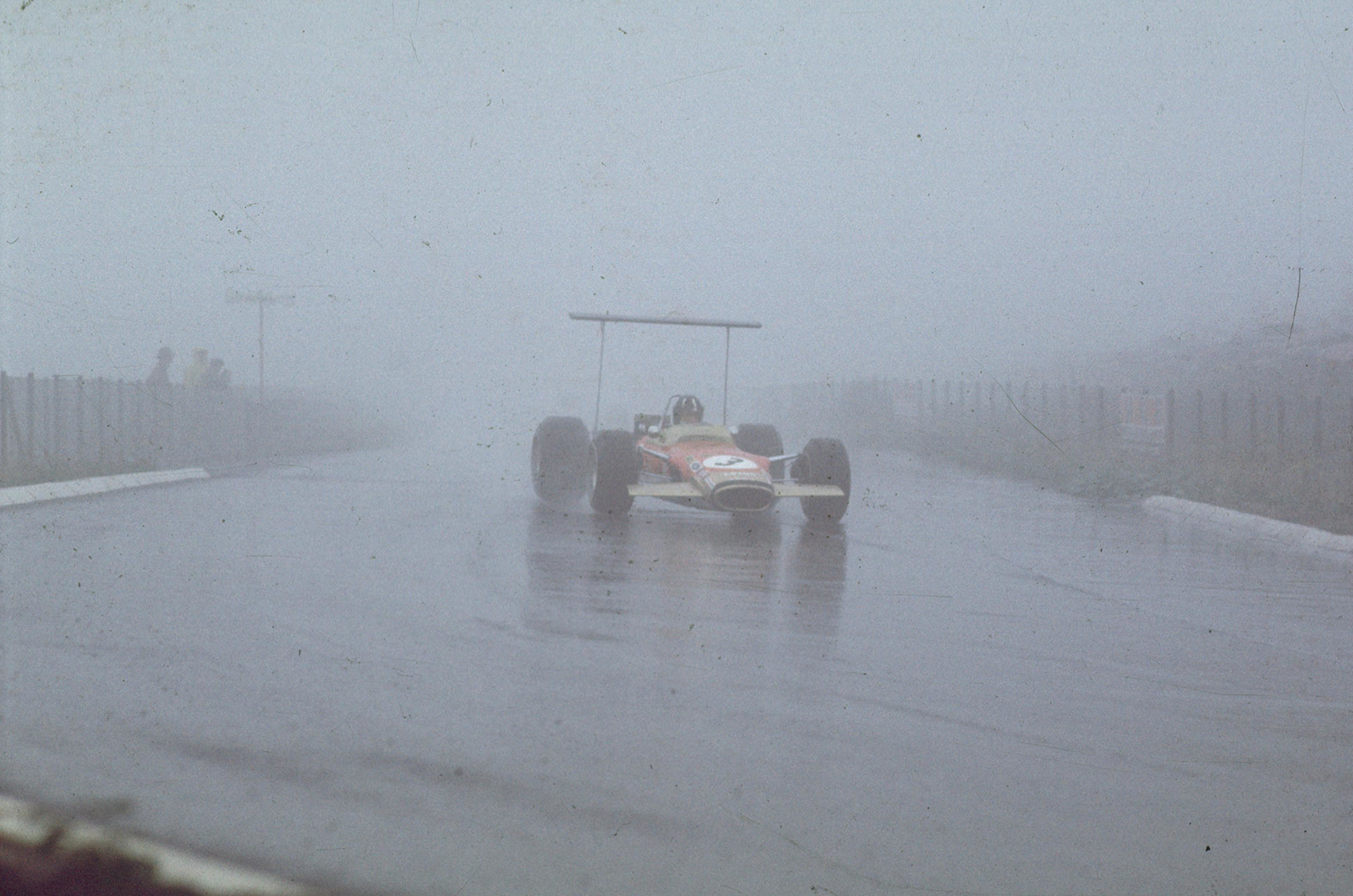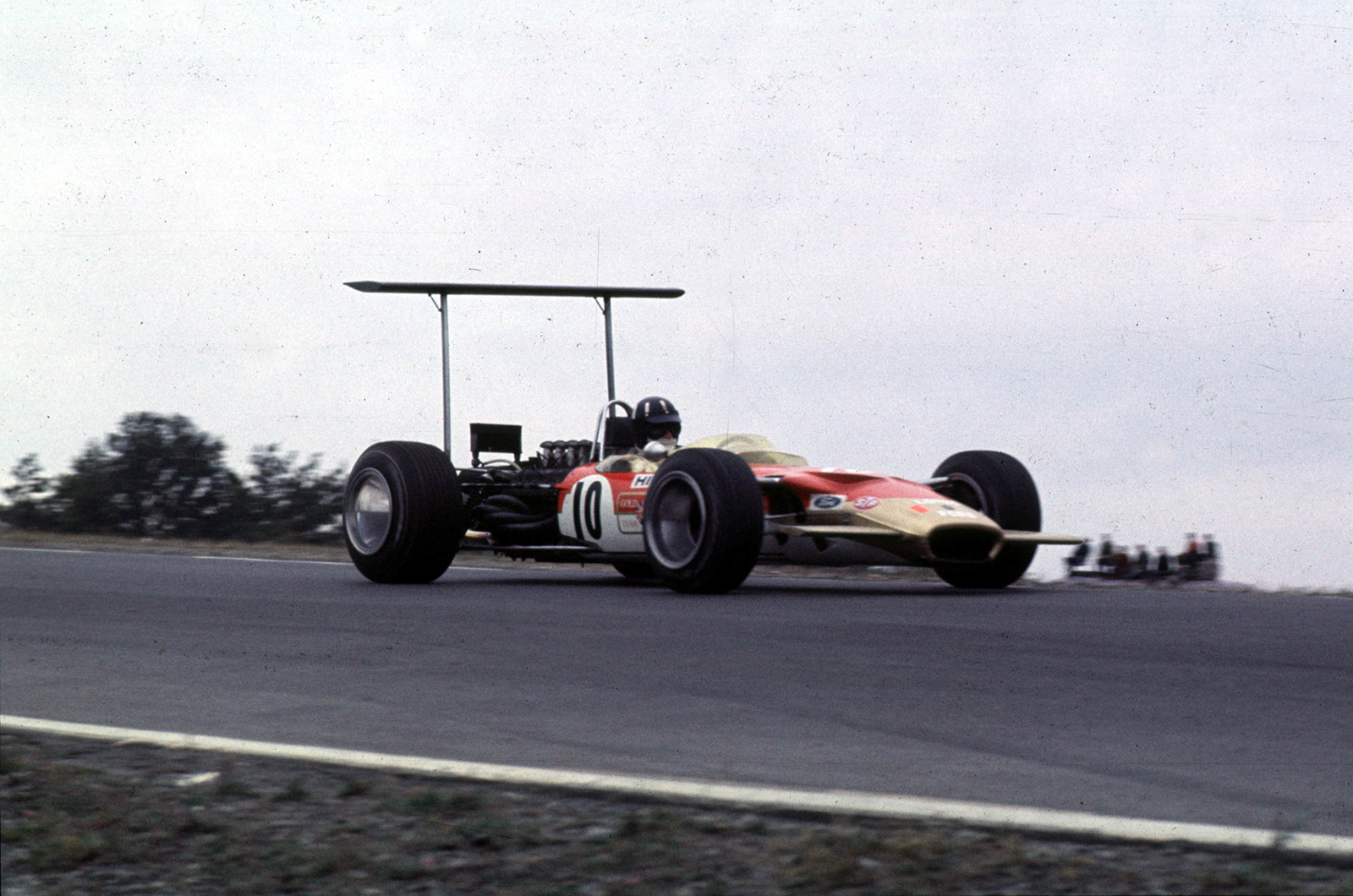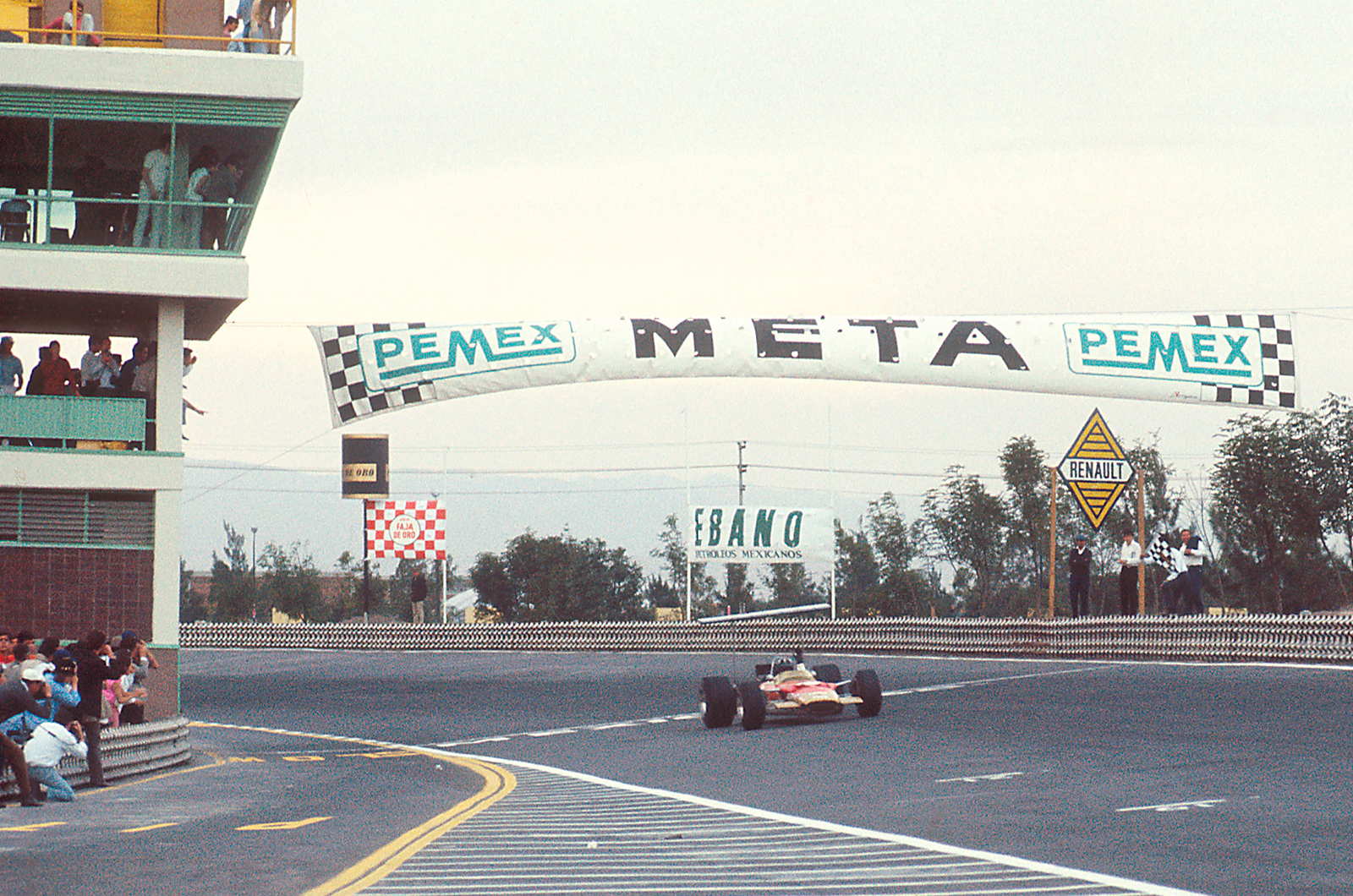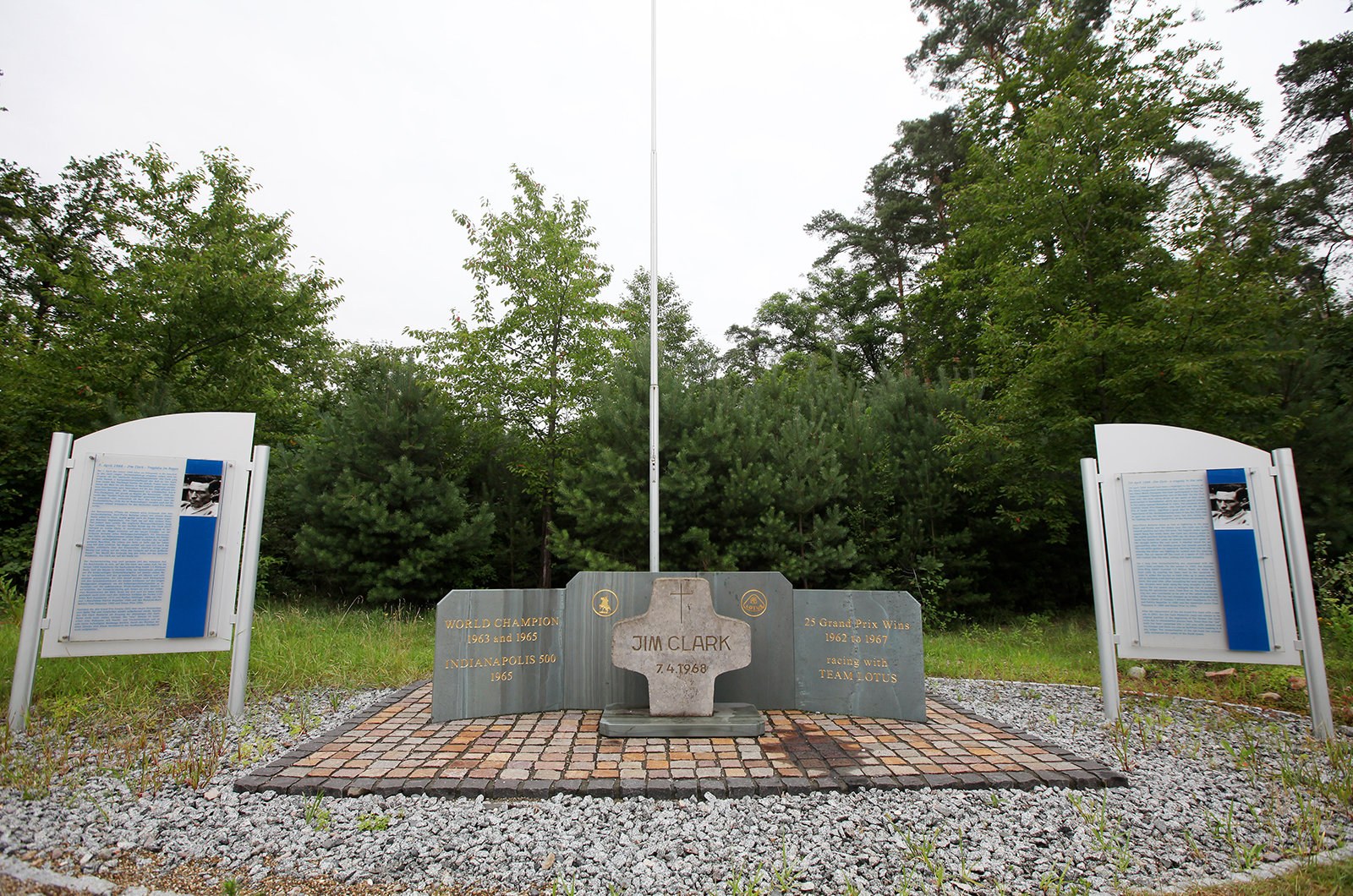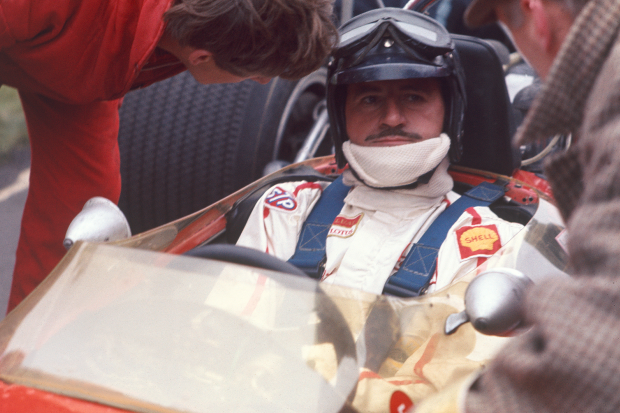
So many things about the 1968 Grand Prix season are unfathomable to an audience raised on modern Formula One, and yet the seeds of three very familiar aspects – safety, aerodynamics and sponsorship – were sown that year.
A championship that probably would have been won by Jim Clark, and which could – given an ounce of good fortune – have been won by Chris Amon, was instead claimed by Graham Hill.
The legendary Englishman had a towering career, but his talent and character were never shown off to better effect than during 1968. Considering the turbulent few months that he and Lotus had endured, it was a fitting result, and the foundations for his success were laid 50 years ago this weekend with a crucial victory in the Spanish Grand Prix.
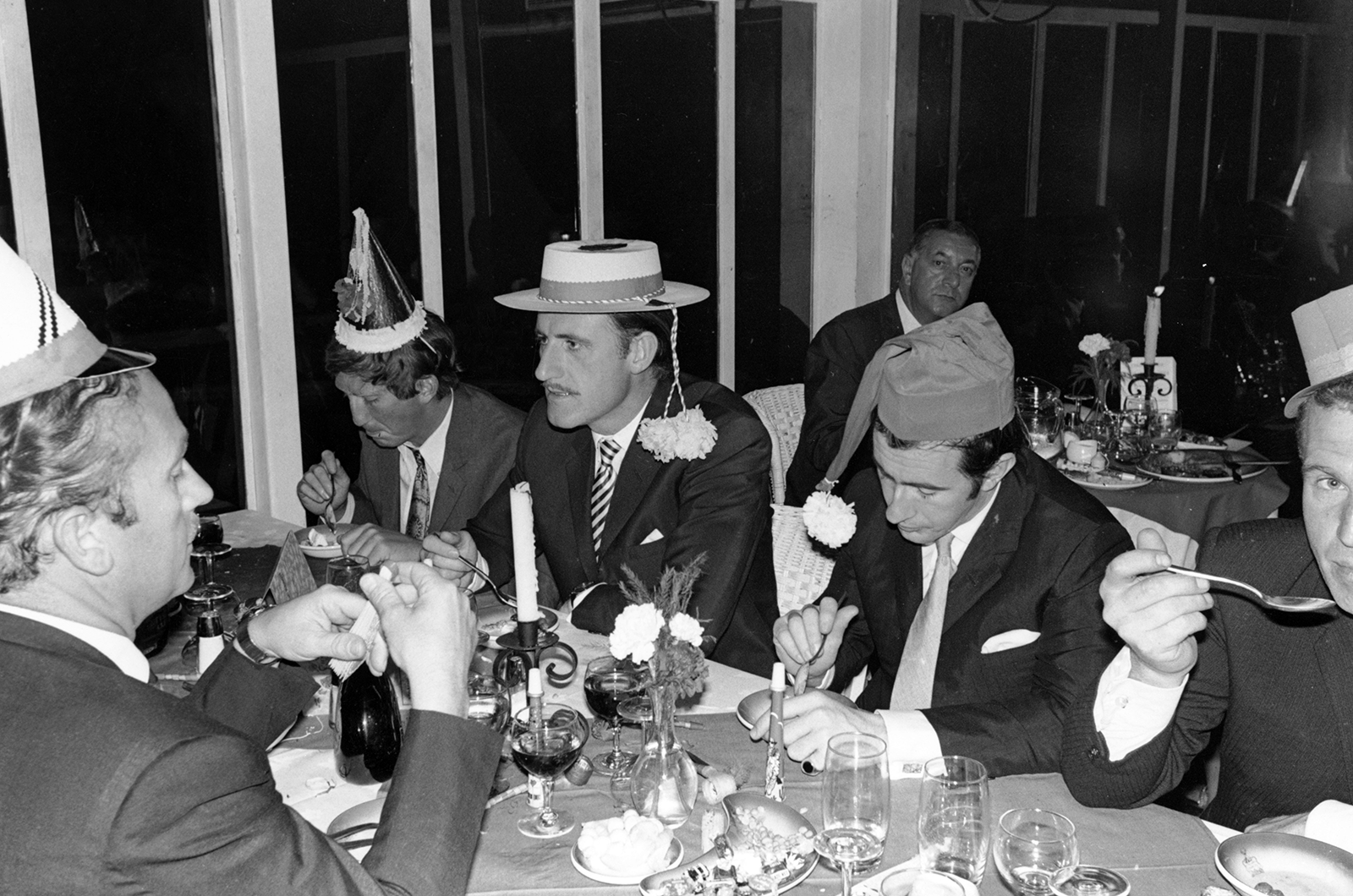
(l-r) Colin Chapman, Jochen Rindt, Graham Hill and Jackie Stewart celebrate Christmas in South Africa
The season-opening South African Grand Prix was held on New Year’s Day, and seemed to indicate that all was business as usual.
After a relaxed build-up to the race during which Hill would sit at the Kyalami Ranch while timing cars that were testing up at the circuit – visible from his spot next to the swimming pool – his Lotus teammate Jim Clark claimed victory.

